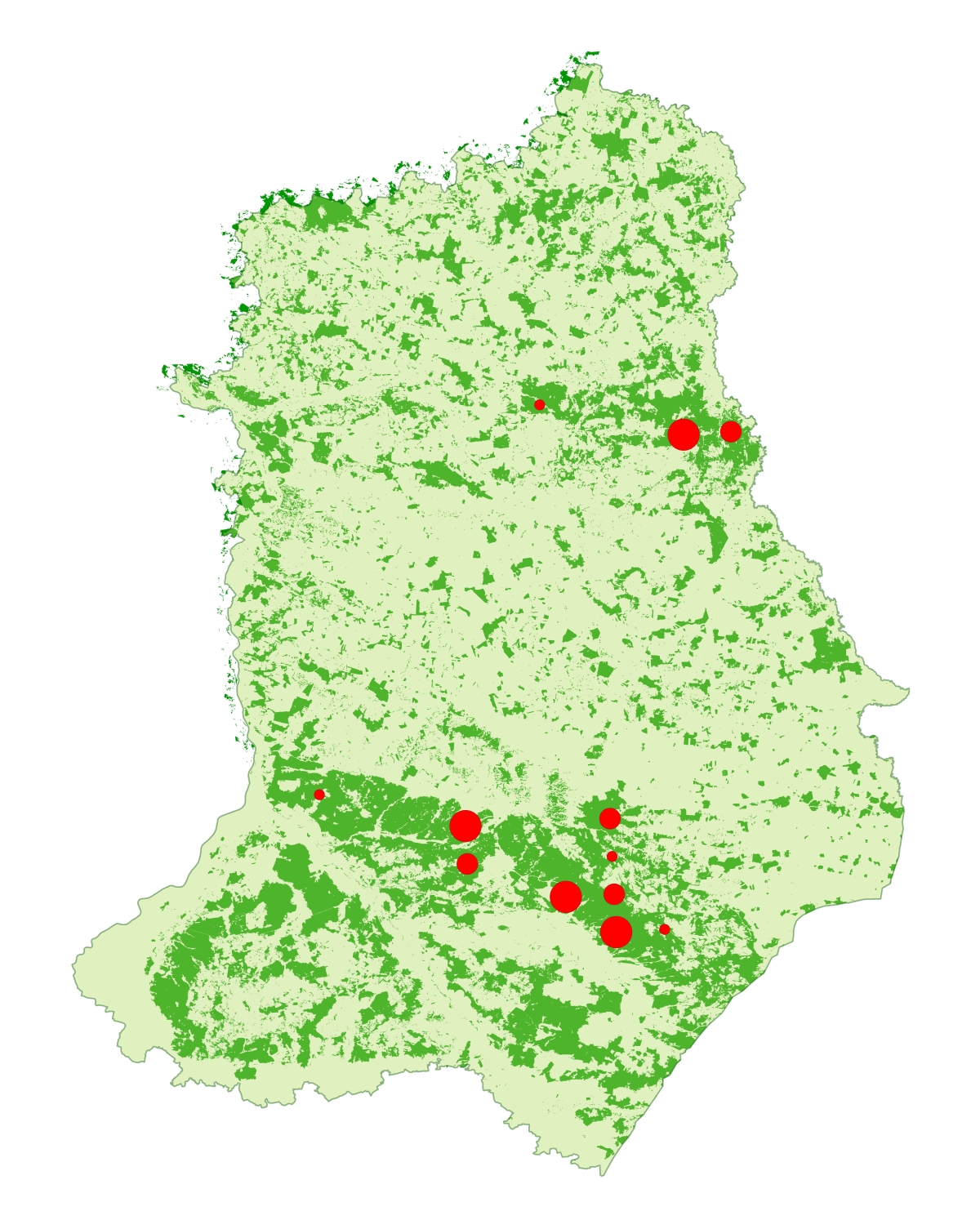Species characteristics
The boreal owl, Aegolius funereus, is a small owl with a large angular-shaped head and short tail. It is about 25 cm long with a 55-62 cm wingspan. The characteristic feature of this bird are the white, rich-feathered legs and toes - hence its name. This owl has yellow eyes surrounded by a pale facial disc with a black rim. Its heavily lifted "eyebrows" give its face a surprised appearance. The boreal owl’s colouration in the upper parts is light brown with numerous blurred spots, whereas the underparts are white with irregular rows of grey-brown, oblong, blurred spots.
Sexual dimorphism is not marked in the plumage but is visible in the body weight – females are heavier than the males. In the air the bird can be identified by its steady straight flight and rounded wings. These owls are active primarily at night whereas they spend the day hidden near tree trunks, in the dense canopies of coniferous trees.
The boreal owl may be a sedentary or a migratory bird, depending on the place of residence, depending mainly on food availability during the winter. Boreal owls nesting in the southern part of the range are generally sedentary and migrate only for short distances, exceptionally up to several hundred kilometres.
This species is monogamous and territorial. Nesting territory is about 1 km2. Boreal owls reach sexual maturity after the first year of life. Males intensively call in their territories from the end of February till May. The birds mainly nest in tree cavities previously occupied by black woodpeckers but also willingly use suitable nesting boxes. Studies have shown that boreal owls even prefer to nest in nesting boxes, where they achieve greater breeding success, raising more young than in the natural tree hollows. Most often they produce one brood per year (two during years when food is abundant). The female lays eggs from March to May and incubates them for about 28 days, whereas the male brings food to the nest. The nestlings leave the nest after about a month and then are additionally fed by their parents for several weeks.
Nesting habitat
The boreal owl inhabits vast, old pine forests as well as over 100 year old beech forests with spruce and fir. An important element of the environment where it resides are open areas: clear-cuts, windfalls, valleys of rivers and streams, swamps, forest plantations and even high poles and young forests, which it often uses as a daytime refuge. The boreal owl avoids those areas inhabited by larger species of owls.
Diet
The boreal owl’s diet is not fully understood. It primarily feeds on small mammals, mainly from the Arvicolidae family, and to a lesser extent on mice and birds. The bird often makes pantries in tree cavities and nesting boxes. Depending on the extent of land cover by vegetation, it hunts in open areas or in open tree stands.
Distribution
The boreal owl occurs in the coniferous forests of northern Europe and in the analogous zones of North America. The southern boundary of its range passes through Central Europe, Asia and China. It can be also found in the Alps and medium-sized mountain regions. In Poland it occurs sparsely, mainly in the mountains and in the northern part of the country (Białowieża Forest, Augustów Forest, Knyszyńska Forest, Pisz Forest and Gdańsk Pomerania). The abundance in Poland is estimated to be about 700-1000 pairs.

Conservation status
The boreal owl is a protected species, listed in the Polish Red Data Book of Animals as a vulnerable species and in Attachment 1 to the Birds Directive.
Threats:
- pressure from predators, especially martens;
- felling of old trees and forest fragmentation;
- simplification of the spatial structure of the forest.









